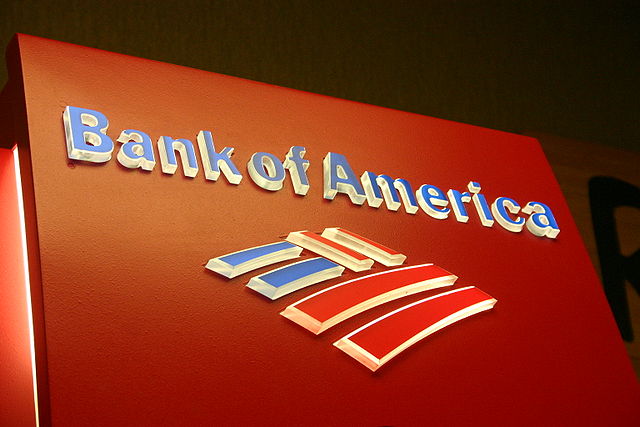Banking, finance, and taxes
The Bullish and Bearish Case for Bank of America in 2014
Published:
Bank of America Corp. (NYSE: BAC) was another Dow Jones Industrial Average (DJIA) component that was booted in 2013. The real question is what lies ahead in its ongoing recovery. 24/7 Wall St. is looking at the bullish and bearish case for 2014.
Bank of America shares rose by about 45% over the past year. That was handily above the broader stock market gains, as the S&P 500 index was up by more than 29% and the DJIA was up by 26.5%. Both major index readings were their highest closing bell prices ever, while the $16 handle on Bank of America compares to prices of well above $40 back before the recession and the bailouts.
There are many macroeconomic factors and sector issues to consider in banking when it comes to Bank of America. There are many regulatory issues to consider as well. Most Wall Street strategists are forecasting higher price targets for the S&P 500, so will that help Bank of America?
The Federal Reserve is about to get a new chairman. It is generally expected that the Fed’s bond buying will see a tapering now, and that is likely to create slightly higher interest rates.
Bank of America remains in the second tier of money center banks after the bailout repayment. It is still yielding well less than 1% for its common stock dividend, and regulators have a tighter hold on its payments to shareholders. The bank still has periodic settlements and fines tied to Countrywide and the mortgage crisis.
The $175 billion market cap is number three among money center banks. The bank also trades at almost 13 times expected 2014 earnings estimates. That may sound cheap against the market, but that is no longer cheap among banking stocks.
The good news is that CEO Brian Moynihan is more entrenched now. That keeps outsiders from attacking his credibility as easily. Bank of America shares also hit a new multiyear high of $16.73 on the third trading day of 2014, and we would point out that the consensus analyst price target is almost $1 lower than the current share price. Still, its book value per share is still listed as above $20.00, and J.P. Morgan and Wells Fargo have both traded above book value.
Rising interest rates often pose a challenge for money center banks, and the regulatory environment’s attack on trading and risk may hamper earnings growth ahead. It is hard to call these banks overvalued, but we can no longer sit around talking about how dirt cheap they are either.
Our take is that the regulators are going to have to allow Bank of America’s common stock dividend to rise in 2014. If not, there could be a breather in the stock.
The last few years made people forget how much banks and CD’s can pay. Meanwhile, interest rates have spiked and many can afford to pay you much more, but most are keeping yields low and hoping you won’t notice.
But there is good news. To win qualified customers, some accounts are paying almost 10x the national average! That’s an incredible way to keep your money safe and earn more at the same time. Our top pick for high yield savings accounts includes other benefits as well. You can earn up to 3.80% with a Checking & Savings Account today Sign up and get up to $300 with direct deposit. No account fees. FDIC Insured.
Click here to see how much more you could be earning on your savings today. It takes just a few minutes to open an account to make your money work for you.
Thank you for reading! Have some feedback for us?
Contact the 24/7 Wall St. editorial team.